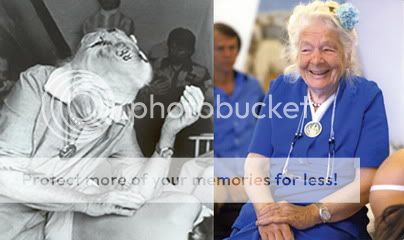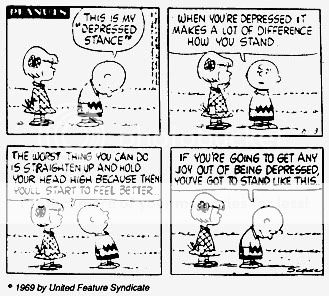Rolfing Overview
According to "Wikipedia Dictionary", Rolfing is a manipulation of the body and tissue to realign the structure of a body. The deep massage treatment was developed by Dr. Ida Pauline Rolf. Studies show the deep tissue rub is combined with pinpointing specific areas of the body in order to maintain or correct posture. Thus, Rolfing is referred to as Structural Integration, or Posture Realignment.
Depression can be a devastating alternative when combined with tragedies such as divorce, and lead to medications prescribed by physicians. However, physicians will also advise patients to seek massage therapy, when they feel Rolfing can benefit the patient. Actually, Rolfing is not a massage and it is not bone manipulation. It works from the fact that our muscles each have a wrapping which is a bit like being encased by a silk bag. These silk bags can start to stick to each other as a result of life's stresses, including depression. As they stick together, instead of working individually they start to work as a mass and this mass starts to pull the spine and bones in the wrong directions, thereby pulling you out of alignment. A physician may find a back out of alignment due to continuous slumping or bad posture. The therapist will work on the area of concern, and trigger in with a deep tissue massage, ultimately releasing the point of contention. It may require up to ten visits to completely release the pained area, or it could only take a few visits.
Rolfing works to free up your muscles so they can move freely and independently again. This is vital in returning your body to a state of balance and health. Once this happens, your spine can improve its alignment and posture. Once the muscles work properly the whole skeletal system can start doing what it's meant to do - support the muscles and protect the organs. It will improve you muscle and back pain, and it will also have a wonderful effect on your breathing and digestion, amongst other things.
Physical pain and Depression
In March 2008, a team of brain researchers at Harvard medical school published a paper investigating the relationship between pain and depression. The researchers observed that patients with pain often show signs of depression. They designed their experiment to investigate the mechanisms by which pain and depression might interact and confirmed that some chemical and a part of the brain are involved in the simultaneous presentation of depression and pain. They are strongly related at a very basic level.
Another team of researchers at the University of Toyama in Japan published research in the journal Neuropsychopharmacology on the relationship between anxiety and pain and stated:
“Clinically, it is well known that chronic pain induces depression, anxiety, and a reduced quality of life. There have been many reports on the relationship between pain and emotion. We previously reported that chronic pain induced anxiety with changes in opioidergic function in the central nervous system.”
So if pain is directly related to anxiety and depression, and Rolfing is doing great job in relieving pain, so it can provide a direct impact on patient’s levels of anxiety and depression.
How does Rolfing differ from Chiropractic and Massage?
Chiropractic care generally focuses on joint and bone alignment through quick and high velocity adjustments. Unless the connective tissue (muscle, tendon, ligamentous) tensions and strains are balanced and repositioned, the bones, which are embedded in this tissue will find their way back into patterns of misalignment. Rolfing works to achieve this balance of tensional strains and creating space by using slow applied pressure to reposition the soft tissue allowing bones to fall back into their natural relationships, optimizing joint motility and thus allowing more permanent changes in bone alignment. In certain cases Rolfing coupled with Chiropractic care can be highly effective.
The general goal for most types of massage is to bring relaxation and stress relief to individual muscles yet offering just temporary relief from symptoms. Rolfing addresses the underlying causes for pain and tension in the body truly holistically, resulting in often profound and significant lasting changes. Rolfers usually have more technical training in anatomy, physiology, kinesiology and therapeutic relationship than the average massage therapist. They understand the relationships that exist between regions of the body and know how to work methodically on a deeper more intrinsic level to bring about lasting change. Not just immediate pleasure, they are trying to encourage you to find a place of freedom and spaciousness that has been lost due to a lack of or limited patterns of movement. This is also achieved throughout each session by having the client actively perform specific movements, breathing into new areas of their body, calling attention to new sensations and even standing and walking during certain sessions.
What Does Rolfing Feel Like?
Rolfing generally feels like slow, applied pressure, similar to a deep tissue or myofascial massage. Today Rolfing is practiced with more effective results using gentle, techniques ranging from light to deeper pressure. Sensations typically range from pleasurable to a deeper feeling of release, depending on factors such as past injuries and chronic stress in the afflicted area that can be either physical or emotionally related.
Clients report a sense of lightness, awareness and better balance. Movement feels easier and more resourceful. Feelings of wellbeing reflect the body’s higher energy level. Chronic pain or discomfort often disappear rapidly throughout the sessions or soon after the series is complete.
The results of Rolfing are not only lasting, they are progressive. Clients report feeling and looking better long after their last session.
Other benefits of Rolfing
* Poor Posture
Almost everyone has a poor posture to certain degree. As the body collapses we get uneven tension in our body. This feels uncomfortable and puts a lot of stress and strain on joints, nerves and internal organs. Good posture feels great!
* Joint Pain
Back, neck, hip, knee, ankle, wrist, shoulder pain can all be alleviated with Rolfing. Balancing the joints takes away the pain.
Back, neck, hip, knee, ankle, wrist, shoulder pain can all be alleviated with Rolfing. Balancing the joints takes away the pain.
* Headaches
Most headaches come from neck and/or shoulder imbalance, which interferes with blood flow and/or puts pressure on nerves in the neck and head. You don't have to put up with headache pain from these causes.
Most headaches come from neck and/or shoulder imbalance, which interferes with blood flow and/or puts pressure on nerves in the neck and head. You don't have to put up with headache pain from these causes.
* Breathing Difficulties
Asthma, emphysema, and panic attacks involve breathing disorders. These conditions, although varied, all respond well to Rolfing. The balancing of the rib-cage (and body generally) and the releasing of pressure on the lungs and diaphragm helps with the overall health, wellbeing and functioning of the respiratory system.
Asthma, emphysema, and panic attacks involve breathing disorders. These conditions, although varied, all respond well to Rolfing. The balancing of the rib-cage (and body generally) and the releasing of pressure on the lungs and diaphragm helps with the overall health, wellbeing and functioning of the respiratory system.
* Anti-Aging
As posture becomes more stooped, internal organs have inhibitory pressure applied on them, preventing them from functioning to their optimum. As Rolfing prevents the breakdown and collapse of the structure of the body, we can stand straight, giving our whole body the opportunity to function properly. The lift and balance of Rolfing helps to organize and space the systems of the body, enabling them to function without stress.
As posture becomes more stooped, internal organs have inhibitory pressure applied on them, preventing them from functioning to their optimum. As Rolfing prevents the breakdown and collapse of the structure of the body, we can stand straight, giving our whole body the opportunity to function properly. The lift and balance of Rolfing helps to organize and space the systems of the body, enabling them to function without stress.
* Arthritis
Helps to unclog and free the joints and move toxic build-up out of the body.
Helps to unclog and free the joints and move toxic build-up out of the body.
* Improving Performance
Many athletes, dancers, yoga students and sportspeople have noticed that the increased flexibility, mobility and fluidity that comes from Rolfing has enhanced and improved their individual performances.
Many athletes, dancers, yoga students and sportspeople have noticed that the increased flexibility, mobility and fluidity that comes from Rolfing has enhanced and improved their individual performances.
* Post Partum
Most women will tell you that their body just isn't the same after their pregnancy. It is important to know that as your body expands for the baby, tissues are stretching and migrating into unfamiliar positions. For some women the pushing out of the abdomen also externally rotates the hips, which stay rotated after the birth. This means that the hip joints no longer fully support the spine and the ribcage collapses down, putting strain on shoulders and neck. For other women the diaphragm might be re-located, the spine compressed or the pelvis itself becoming unstable. Rolfing will put you back together, better than before your pregnancy.
Most women will tell you that their body just isn't the same after their pregnancy. It is important to know that as your body expands for the baby, tissues are stretching and migrating into unfamiliar positions. For some women the pushing out of the abdomen also externally rotates the hips, which stay rotated after the birth. This means that the hip joints no longer fully support the spine and the ribcage collapses down, putting strain on shoulders and neck. For other women the diaphragm might be re-located, the spine compressed or the pelvis itself becoming unstable. Rolfing will put you back together, better than before your pregnancy.
Summary
Physicians and chiropractors believe Rolfing is a safe alternative to medicine, including prescribed drug treatment. Unfortunate side effects are linked to medications for depression that can cause dependability. And if you have heard talk of it being incredibly painful, the perception was once correct, but it is outdated now. In the old days Rolfing was known to hurt quite a lot. However things have changed, and the new breed of Rolfers are gentle and just as effective.
Sources and Additional Information:















